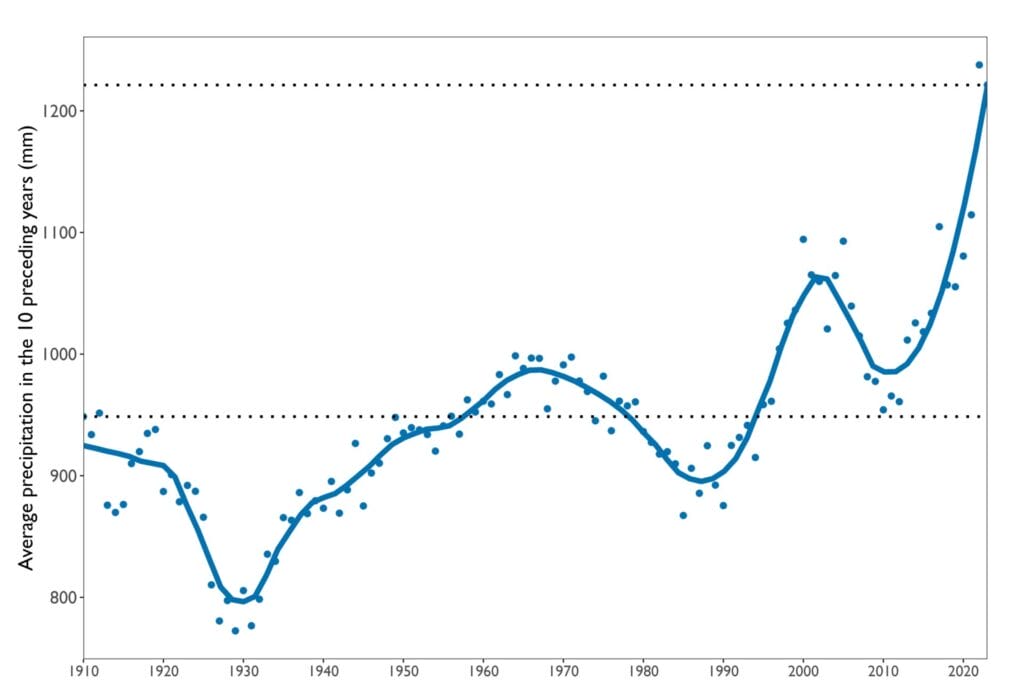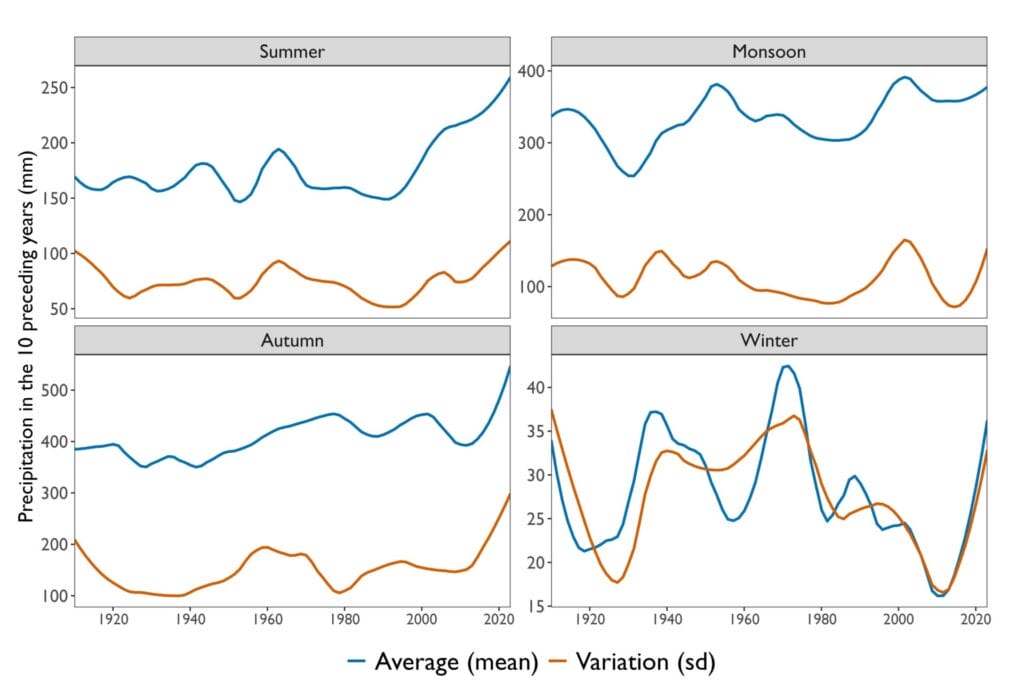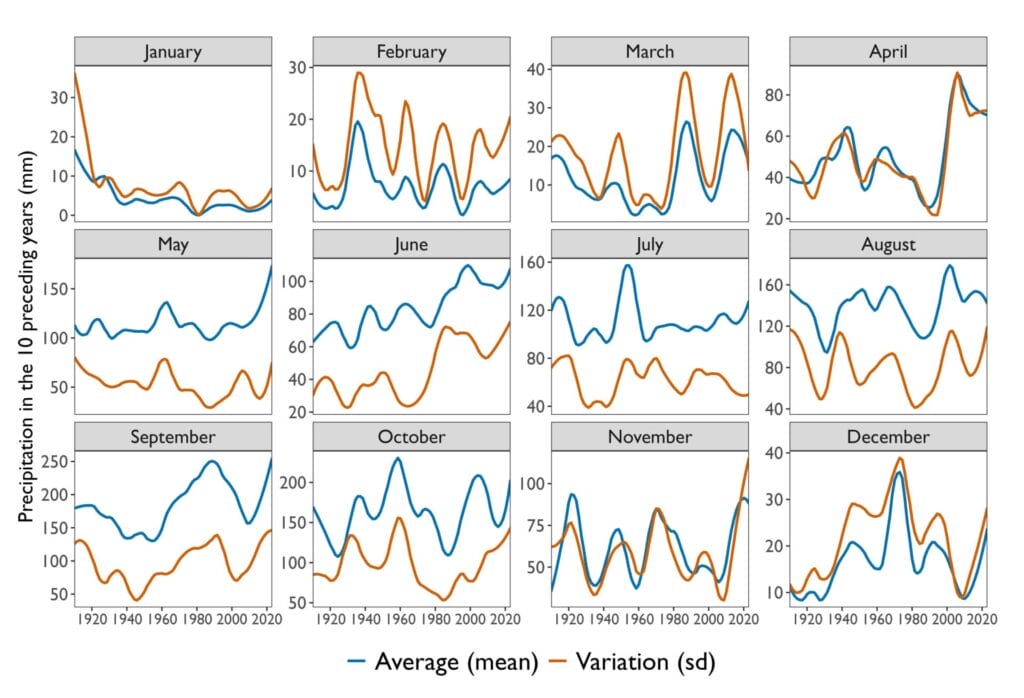This three part series examines rainfall patterns in Bengaluru and the lessons we can learn about water resilience.
Part 1: Over 100 years of Bengaluru rains decoded
Part 2: Can a little boy affect Bengaluru’s rains?
Part 3: Deluge or drought: Water researchers explain how Bengaluru can build resilience
Through my childhood in the nineties, all I recall about Bengaluru’s weather was that it was good, mild or fine. By mid-2000s, the talk was mostly about how the city was getting hotter.
In 2020, well into adulthood, I suddenly noticed the rains. Over the course of the first lockdown, lime- washed white compound walls around our neighbourhood were turning green with moss. Sunlight started to become a rare commodity even in a reasonably well-ventilated house like mine.
There seemed to be more snakes, even a frog or two. My suburban North Bengaluru neighbourhood began to look like Coorg or Sakleshpur or some other town in the Western Ghats. And the monsoon seemed to go on for a lot longer, eating into what should have been cold but bright and dry winter months.
After the intense rain and flooding last year, Bangaloreans, the media, and even the BBMP spent the monsoon of 2023 in intense anticipation. The state government and BBMP promised our infrastructure would stand up to the might of the rains. It didn’t. Small thundershowers in May broke roads, inundated homes, and flooded underpasses, leading even to the loss of lives.
The usual saga of Bengaluru’s crumbling infrastructure aside, 2023 has been confusing rain-wise. The Indian Meteorological Department (IMD) declared that India had substantial rainfall deficit in August. On September 1st, the skies opened up in Bengaluru and much of the country. But it just doesn’t feel like we will have such a wet city this year.
However, as some people of dubious character would say on the internet, facts don’t care about feelings.
To better understand the city’s rainfall patterns, we looked at IMD rainfall data from 1900 to last month, August 2023. Here is what over a hundred years of data tell us about the city’s weather.
How to read the charts
Typically, annual rainfall each year is compared to the Long Period Average (LPA) set by the IMD. As the name implies, LPA is an average of rainfall calculated over a long period of 30 years. This LPA is revised periodically to take more recent years into account. IMD’s latest LPA, 1990-2020, is 1077.1 mm.
So, when total rainfall in a year is less than the LPA we have a rainfall deficit and when the total rainfall is greater than the LPA we have excess rainfall. The previous LPA, calculated from rainfall data from 1981-2010, was 986.1 mm. Our previous rainfall data stories used this LPA to compare yearly rainfall patterns.
However, for this story, we didn’t compare annual rainfall with the LPA. Instead, we compared average rainfall over continuous ten year blocks, i.e., 1900-1910, 1901-1911, 1902-1912 and so on. This calculation allows us to capture more continuous snapshots over the hundred years. All the graphs in this story are presented in this manner.
Annual rainfall in Bengaluru has increased

Note: This chart has been updated in October 2024, to include rainfall data from October, November and December of 2023.
Multiple data stories in Citizen Matters have pointed out that rainfall in the city has increased over the years. This holds true with our latest analysis as well. Average annual rainfall has increased from 900 mm in the 1900s to around 1,200 mm at present. The annual rainfall since 2020 has been over 1,200mm. However, in 2022, the city received 1,957mm of rainfall; the highest in 122 years.
Read more: Annual rainfall increasing in Bengaluru, data shows
Rainfall in the four seasons
Bengaluru’s rainfall predominantly comes from the South-west monsoon, which normally arrives in the first week of June. But the city also gets rainfall from cyclonic depressions in the Bay of Bengal and the Arabian Sea, and receives lots of thunderstorms too.
So, is the monsoon season when the city gets most of its rain? We broke down the data into four broad seasons: Summer (March, April, May), Monsoon (June, July, August), Autumn (September, October, November) and Winter (December, January, February).
We would expect the Monsoon season to have the most rainfall (blue line in the graph), but surprisingly, Autumn months consistently receive the most rainfall, followed by Monsoon and Summer. Winter is the driest season in the city.

Note: This chart has been updated in October 2024, to include rainfall data from October, November and December of 2023.
Since the 1980s, rainfall has been increasing in Autumn, Monsoon and Summer, and decreasing in Winter.
The data also shows variation, i.e., the variability in the rainfall in these seasons over the years. Variation here is a measure of how predictable rains are, which is crucial information for farmers, urban planners, schools, offices, and hospitals.
On the whole, Summer and Monsoon do not seem to be very variable, indicating rainfall in these seasons is quite predictable. But rainfall in Autumn is becoming increasingly unpredictable. There appears to be a lot of variation in Winter, but the amount of rainfall is very low in this season, so it maybe hard to infer much from this. But it is important to note that this is also the driest season for the city.
Month-wise rainfall
While seasonal patterns look quite stable, rainfall in the city varies quite a bit from month to month.

Note: This chart has been updated in October 2024, to include rainfall data from October, November and December of 2023.
The average rainfall in April has been increasing steadily since this period. April is also the month with the highest variation. For instance, Bengaluru received around 22.7 mm of rainfall in April 2014 and 225.8 mm in April 2015, which is a 200 mm increase. The subsequent year, April 2016, it was 21.9 mm.
May similarly is an unpredictable month. In May 1979, Bengaluru received around 77mm of rain. The very next year, in May 1980, the amount of rainfall doubled. In May 2021, the city received 132 mm. In 2022, it was 304 mm and in 2023, 330 mm.
Read more: Bengaluru’s changing rainfall patterns: expert points to climate change
Average rainfall is also increasing in October and November. These are also months that are becoming increasingly unpredictable. For instance, the city received 277.8 mm of rain in November 2021 and 59.8 mm in November 2022. Here is a snapshot of rainfall in November between 2012 and 2022.
| 2012 | 125 |
| 2013 | 143.7 |
| 2014 | 25.7 |
| 2015 | 296.4 |
| 2016 | 1.5 |
| 2017 | 20.6 |
| 2018 | 12.8 |
| 2019 | 8 |
| 2020 | 71 |
| 2021 | 277.8 |
| 2022 | 59.8 |
This variability could well be the result of climate change. Scientists have been saying for years that increased warming will lead to extreme and unpredictable weather. In part 2, we will look at what could be causing this variability in rainfall over the years and why this August was such a low rainfall month.
Ashwin Viswanathan did the statistical analysis for this article. Ashwin is a naturalist and ecologist.
Note: We used IMD data most of which was collated by bngweather and shared with the urban data portal OpenCity.in. Vaidya R. contributed to the data compilation.
Note: The original version of this article only included data til September 2023. The graphics in this article have now been updated to include rainfall data from October, November and December of 2023. Our inferences remain the same.
Good information. Thanks for sharing.
good information